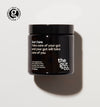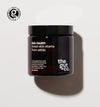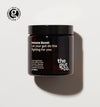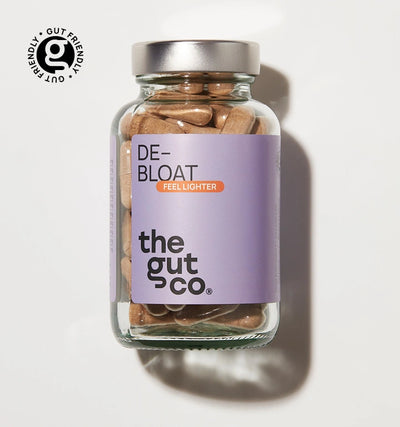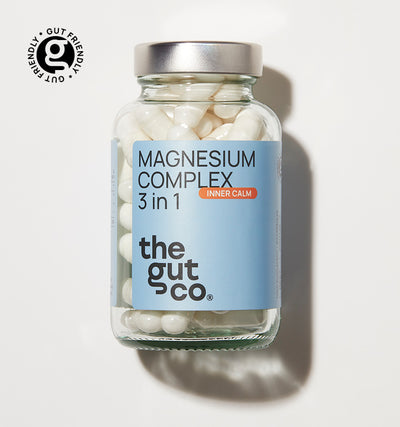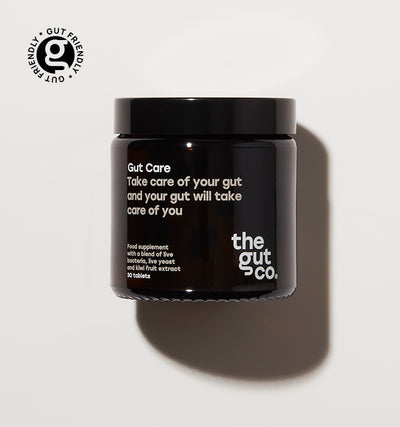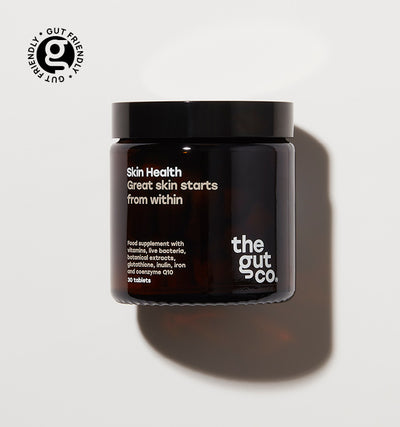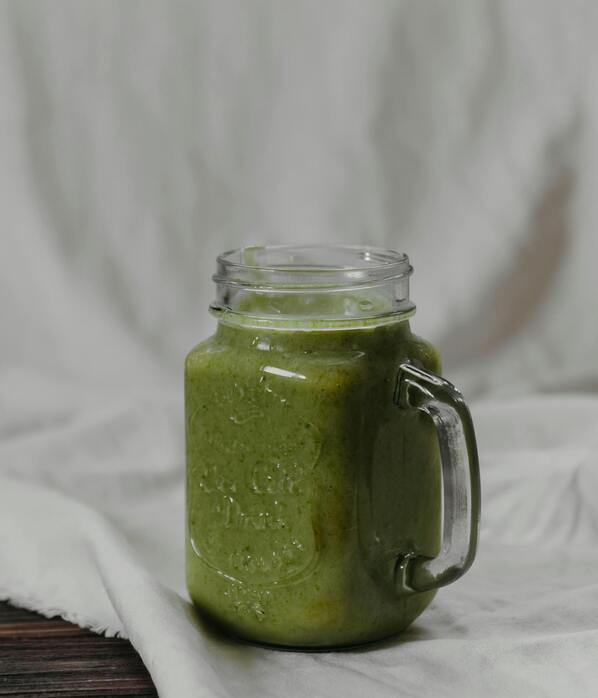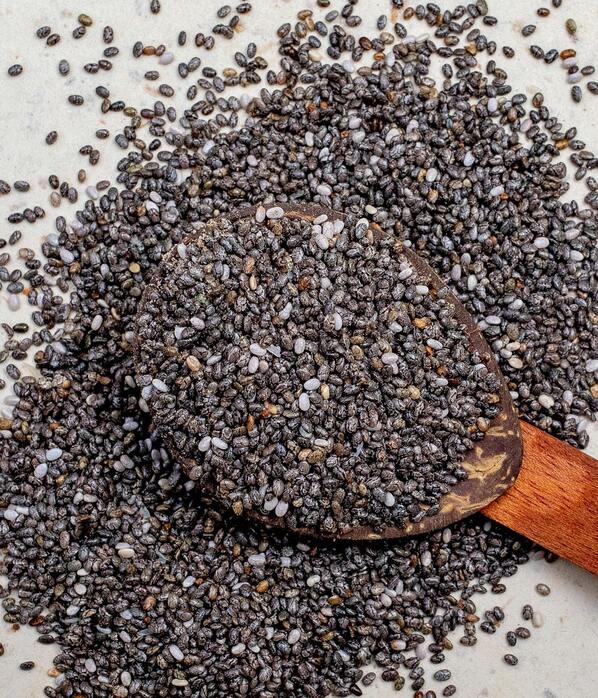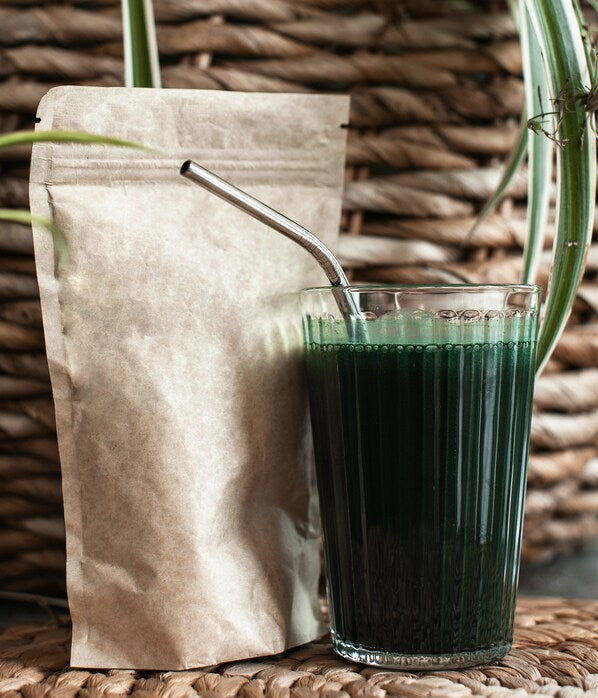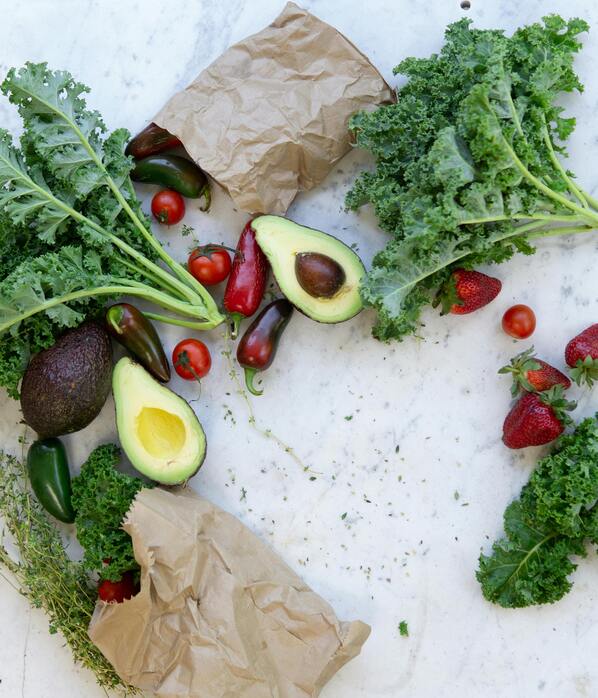A Guide to the Gut-Skin Axis
Date:
22 May 2022

The Gut-Skin Axis can sound complicated, but it's pretty simple to understand when you break it down. Essentially, it links our gut's health and our skin's appearance.
Great skin starts from within is a motto worth remembering. Many skin care products, creams and ointments aim to reduce the appearance of skin conditions without targeting the route cause. Healing your insides will have the most significant impact on the appearance of your skin!
There are 2 key ways in which the gut contributes to the appearance of our skin: 1
1 - The gut communicates with the skin via the immune system to regulate systemic and local inflammation.
2 - More directly and less commonly, intestinal bacteria and metabolites can enter the bloodstream and disrupt the skin's microbiome by accumulating. This can happen when the intestinal barrier is impaired.
How Is The Gut Connected To The Immune System?
So, let's start with how the gut impacts the skin through the immune system. The gut microbiome's health partly controls our immune system's effectiveness.
We have trillions of good and bad bacteria in our gut microbiome that must be balanced to maintain gut health. If the balance is off and there are too many bad bacteria, our immune system works less effectively. This imbalance of bacteria is known as dysbiosis.
If the immune system isn’t working correctly, it can lead to inflammation around the body, including the skin. Conditions such as psoriasis, eczema and acne can all be linked to a poorly functioning gut microbiome.
Did you know that the skin is the largest organ in the body? Well, it is. It is an ecosystem spanning 1.8m² that supports many microorganisms. It is the first line of defence against foreign bodies that may cause our bodies harm, so it is beneficial as a physical barrier. 2
What In The Gut Is Associated With Skin Conditions?
Gut issues can vary greatly, but some linked with the appearance of skin conditions can be: 3
- Gut Pathogens
- Insufficient good bacteria
- Overgrowth of bad bacteria and yeast
- Poor Digestion
- Inflammation
- Leaky Gut
- Food Intolerances
All of these can be linked to varying skin conditions through the Gut-Skin Axis. The gut must be balanced and healthy to eliminate or reduce the effects of skin conditions.
Which Bacteria In The Gut Cause Skin Inflammation?
There are trillions of bacteria in the gut and thousands of different species. We must have some bad bacteria to balance the gut microbiome, but the overproduction of certain types of bacteria can lead to issues.
Let's break down a few that link directly to skin conditions you may be suffering from:
The live bacteria H. Pylori, found in the stomach, can be linked to rosacea, psoriasis and atopic dermatitis, the most common form of eczema. Blastocystis Hominis is a parasite that lives in the colon. This can be linked to psoriasis, palmoplantar pruritus, and acute and chronic urticaria. 3
It’s not all about the bad bacteria - low levels of good bacteria can also cause skin conditions:
We need the good bacteria Lactobacillus Bifidobacterium in our gut microbiome to make it healthy. If the levels of this are low, it can lead to acne and atopic dermatitis.
The good bacteria Akkermansia muciniphila being low can lead to psoriasis. Faecalibacterium prausnitzii presenting low levels can also lead to psoriasis or atopic dermatitis. 3
The issue in the gut can also be the overgrowth of certain bacteria. If you have high levels of Staphylococcus aureus, you could suffer from eczema, impetigo, boils and cellulitis.
There are many histamine-producing bacteria, and if these are overgrown, they can cause urticaria, pruritus, rosacea, psoriasis or eczema.
These bacteria have lengthy, confusing names, and good luck pronouncing them! Although they sound confusing, all you need to know is how to maintain good levels of good bacteria and low levels of bad bacteria to keep things balanced.
How Do I Balance My Gut Microbiome?
Probiotic Supplements
Well, the first thing you need to consider is taking a probiotic supplement. Probiotics feed the good bacteria allowing them to repopulate whilst adding new strains. The Gut Co’s product Skin Health contains strains of live bacteria to help tackle the issues associated with the skin conditions mentioned above.
Skin Health contains Lactobacillus Rhamnosus SP1, which has been shown to reduce the appearance of acne and eczema, and psoriasis by tackling the symptoms of inflammation and irritation.
They support detoxification and sebum secretion, which is responsible for oil production within the skin. They also support insulin signalling, which has shown a solid link to adult acne.
Probiotic Food Sources
You can also consume probiotics in food sources - namely fermented foods such as kimchi, pickles, sauerkraut, yoghurt, kefir, tempeh and miso.4 Probiotic foods work the same way as probiotic supplements - adding different strains of good bacteria to your gut and feeding the existing good bacteria.
Prebiotics In Food Sources
It’s also helpful to consume prebiotic foods, as prebiotics feed the good bacteria in your gut, allowing them to reproduce and leaving less room for the bad bacteria. Prebiotic foods include many fruits and vegetables such as apples, bananas, berries, artichokes, asparagus, onions and garlic.5
Consuming More Fibre
Consuming more fibre is also helpful to keep your gut microbiome balanced. The body cannot break down dietary fibre, so it arrives at the good bacteria intact.
This allows them to feast on the fibre and stops them from eating your intestinal lining to survive. The intestinal lining is damaged in this way can lead to leaky gut syndrome, one of the gut conditions that impact the appearance of your skin.
You can get fibre from many food sources, including fruit and vegetables, brown rice, wholegrain breakfast cereals and bars, peas, beans, nuts, skins of potatoes and many others.6
You can also get a dose through The Gut Co's Gut Care tablets; they contain Actazin, a natural kiwi fruit powder which contains fibre. Actazin acts as a prebiotic that feeds the good bacteria in your gut. Great news, right?
Final Thoughts
The Gut-Skin Axis is hugely linked to the types of bacteria that we have in our gut microbiome. Too much of some and not enough of others causes reactions in the skin's microbiome that can be itchy, unpleasant, unsightly and painful.
Keeping our gut microbiome healthy and balanced can help keep these skin reactions at bay. Don't forget - great skin starts from within!
Related content: Eczema and Gut health: Is there a Link?
References
- https://thesecretlifeofskin.com/2019/09/23/gut-skin-axis/
- https://www.ncbi.nlm.nih.gov/pmc/articles/PMC3535073/
- https://www.youtube.com/watch?v=eYzwRuriycs
- https://www.healthline.com/nutrition/11-super-healthy-probiotic-foods#TOC_TITLE_HDR_6
- https://www.healthline.com/nutrition/19-best-prebiotic-foods
- https://www.nutrition.org.uk/healthy-sustainable-diets/starchy-foods-sugar-and-fibre/fibre/#:~:text=To%20get%20enough%20fibre%20in,seeds%20and%20potatoes%20with%20skins.



